Editor’s Note: This account comes from Pat Dunn, a Backpacking Light Member who encountered a medical emergency in Jasper National Park. Pat and her husband Sam were carrying a Garmin inReach Mini and activated the SOS button. I invited Pat to share her experience for the rest of us, so we had some understanding of what happens when GEOS (a.k.a. the International Emergency Response Coordination Center, or IERCC) springs into action following an SOS activation of a satellite communications device. – Ryan Jordan
My long-time partner Sam and I were married in July and in August we undertook a honeymoon backpacking trip in northern Jasper National Park. We are seniors and are both experienced backpackers. We have backpacked in this area before but this time we had prepared for a longer trip than we’ve previously done.
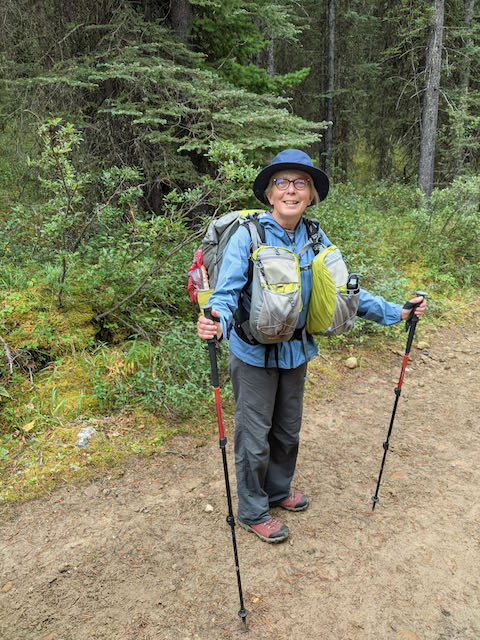
Day 4 was wet with rain that turned to snow. When we pulled into camp we ate a quick light meal and then ducked into the tent for the night. The next morning dawned cold and wet and still snowing and raining. We decided to get up and get moving and had only a couple of granola bars as we packed up the tent.
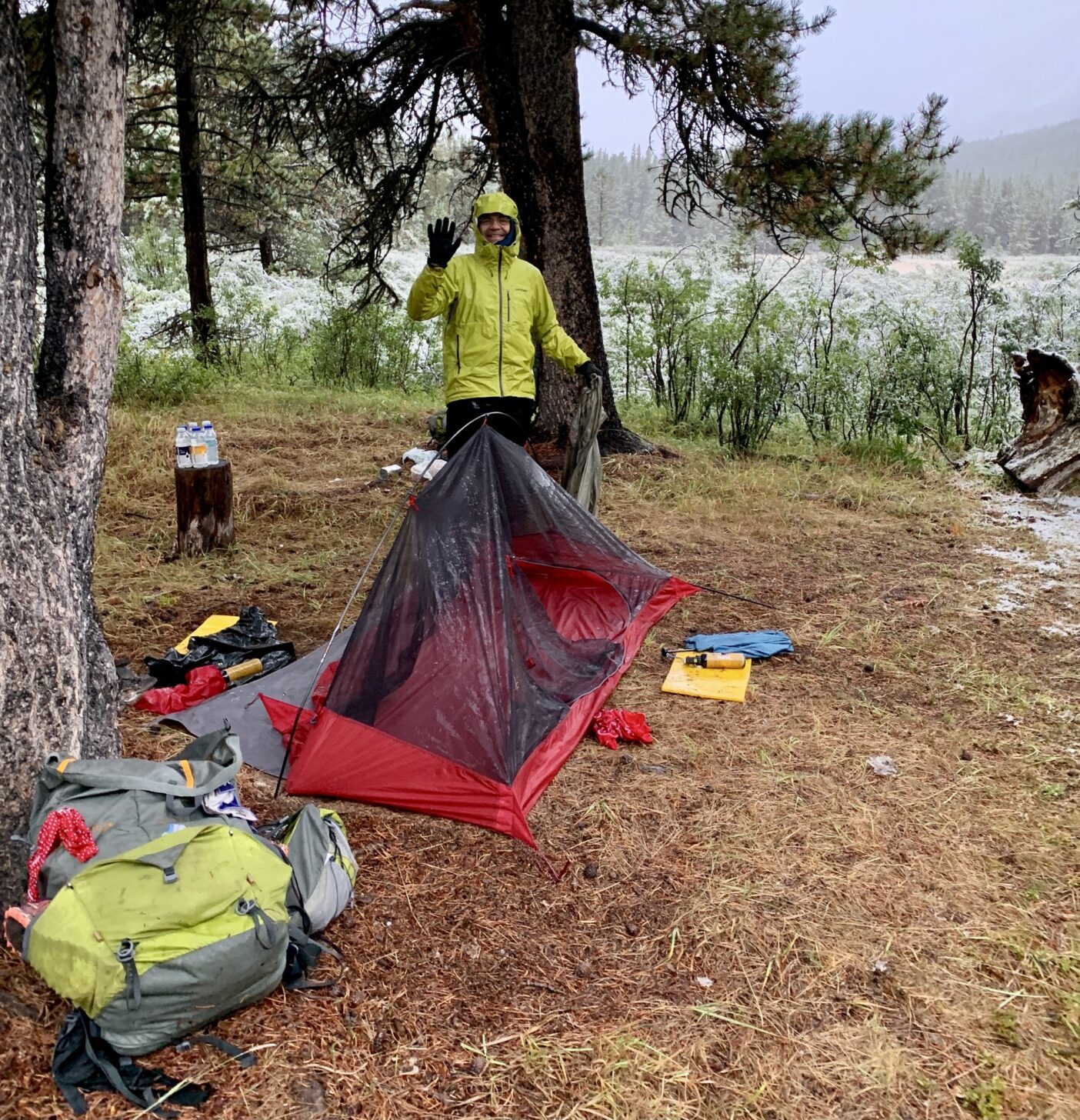
The first couple of hundred metres of the hike were in a knee-deep marsh, where we were hopping from tussock to tussock to cross to drier ground. Practically mid-hop I was suddenly seized by an inability to breathe: the world went black and I was bent over gasping for air, then passed out and collapsed, falling into the marsh.
I was out for a short moment, then Sam pulled me to my feet, and then I collapsed again. Sam got me on my feet again and helped me get to solid ground. He got out the stove and made a hot drink, and retrieved my pack. We waited to see how I would recover and how I was feeling. Although I began to get my breath back, I didn’t feel well. We were both in shock at the suddenness and violence of this collapse. We realized that I needed medical attention. We had been carrying the Garmin inReach Mini for years on trips primarily as a communications tool. We never thought we would use the SOS button and in fact, were not entirely clear what would happen once we pressed it. We had an idea of what we hoped would happen based on our experience in taking the Backpacking Light online course How to Use the Garmin inReach.

So we pressed the SOS button and a well-oiled process leapt into action. Very quickly we received a text back from GEOS (a.k.a. the International Emergency Response Coordination Center, or IERCC) asking about the nature of the emergency and what had happened.
This was where we realized that the one cell phone we shared between us had run out of battery life, and that phone – paired with the inReach Mini – would make it much easier to communicate with GEOS. So Sam dug in his pack for the portable battery charger, and plugged in the phone to charge it enough to boot it up. This delayed our response to GEOS by a few minutes.

We replied with more information. They responded with the contact name and number of the public safety specialist in Jasper who they had alerted. GEOS asked to be advised when we knew that help was on its way. We were then in touch with Jasper, who requested information on the location and asked about a landing place for a helicopter. There was a large open meadow at this location.
Sam set up the tent for me. I waited under the warmth of a sleeping bag. The helicopter took about an hour to arrive. Flying conditions were not great as it continued to rain and snow. Meanwhile, both GEOS and Parks Canada alerted our two emergency contacts and kept them informed throughout the morning. We were all very grateful for this and very impressed with their communications. When the helicopter arrived I was able to walk to it and Sam quickly broke camp, packed up, and we flew out.
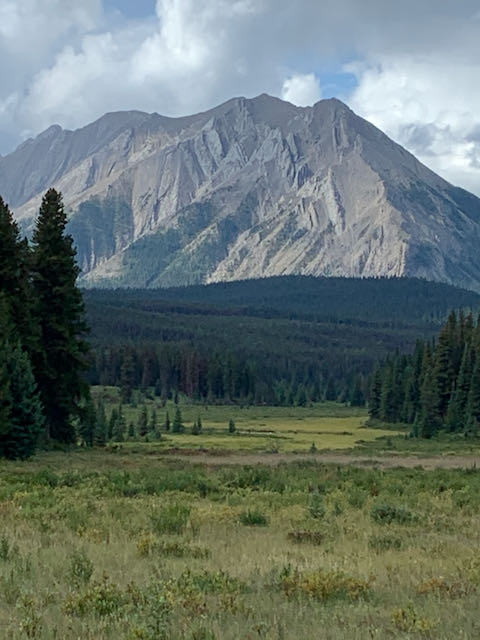
We felt that the decision to push the SOS button was the right one: we were four days from our vehicle and didn’t know if this was a life-threatening event. We didn’t know if it would happen again, or even what had happened. But I felt embarrassed at having to call for help because we value the feeling of self-reliance in the backcountry. In addition, rescue operations are expensive and they expose public safety staff to risk.
Editor’s Note: Wilderness medicine protocols as taught by the Wilderness Medicine Institute define instances where an evacuation is necessary, or whether the evacuation should be slow (self-assisted) or fast (emergency airlift). Difficulty breathing, fainting, Pat’s age, and no obvious pre-existing circumstances that could predict her behavior (i.e., heat exhaustion, sickness, or an allergic reaction) point to the high probability that this could have been a serious medical emergency (e.g., heart episode), and that activating the SOS signal on a satellite communications device was the right choice.
After the trip, I underwent a barrage of heart tests and was finally advised by the cardiologist that my heart is healthy. He suspected a vasovagal episode caused by what he called “a perfect storm” of metabolic conditions possibly including dehydration, hypoglycemia, and significant physical effort. We may never know what exactly triggered it and I should be able to ensure it is never repeated.
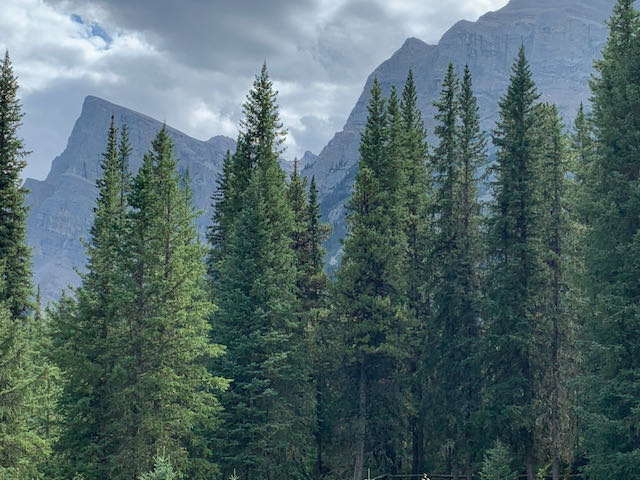
Things we learned/observations:
- Keep the cell phone charged.
- Worsening weather or lack of availability could have meant a long wait before a helicopter could arrive. Setting up the tent helped but we were wishing for heavier waterproof gloves and more robust rainwear. This is where our wish to keep our packs light runs smack into the need, sometimes, for heavier gear.
- The SOS request must be closed after the incident is resolved. GEOS had to remind us that it is done by holding the SOS for 3-5 seconds and then confirming the cancellation.
- The person who has triggered the SOS just has to sit around and wait for help, but their companions carry the burden of care while waiting for the rescue team. In an immediately life-threatening situation or where serious injuries have occurred, their ability to also communicate with GEOS and the rescue organization would be enormously helpful in supporting the hiking companions of the person needing help.

Related
- Interview: the Garmin inReach Mini has been upgraded to version 2 – learn more in Ryan Jordan’s recent interview with Garmin
- Gear: Research & discover more about the Garmin inReach Mini 2 in the Backpacking Light Gear Shop.
- Learn: Enroll in the How to Use the Garmin inReach Mini Masterclass
DISCLOSURE (Updated April 9, 2024)
- Backpacking Light does not accept compensation or donated/discounted products in exchange for product mentions or placements in editorial coverage. Some (but not all) of the links in this review may be affiliate links. If you click on one of these links and visit one of our affiliate partners (usually a retailer site), and subsequently place an order with that retailer, we receive a commission on your entire order, which varies between 3% and 15% of the purchase price. Affiliate commissions represent less than 15% of Backpacking Light's gross revenue. More than 70% of our revenue comes from Membership Fees. So if you'd really like to support our work, don't buy gear you don't need - support our consumer advocacy work and become a Member instead. Learn more about affiliate commissions, influencer marketing, and our consumer advocacy work by reading our article Stop wasting money on gear.

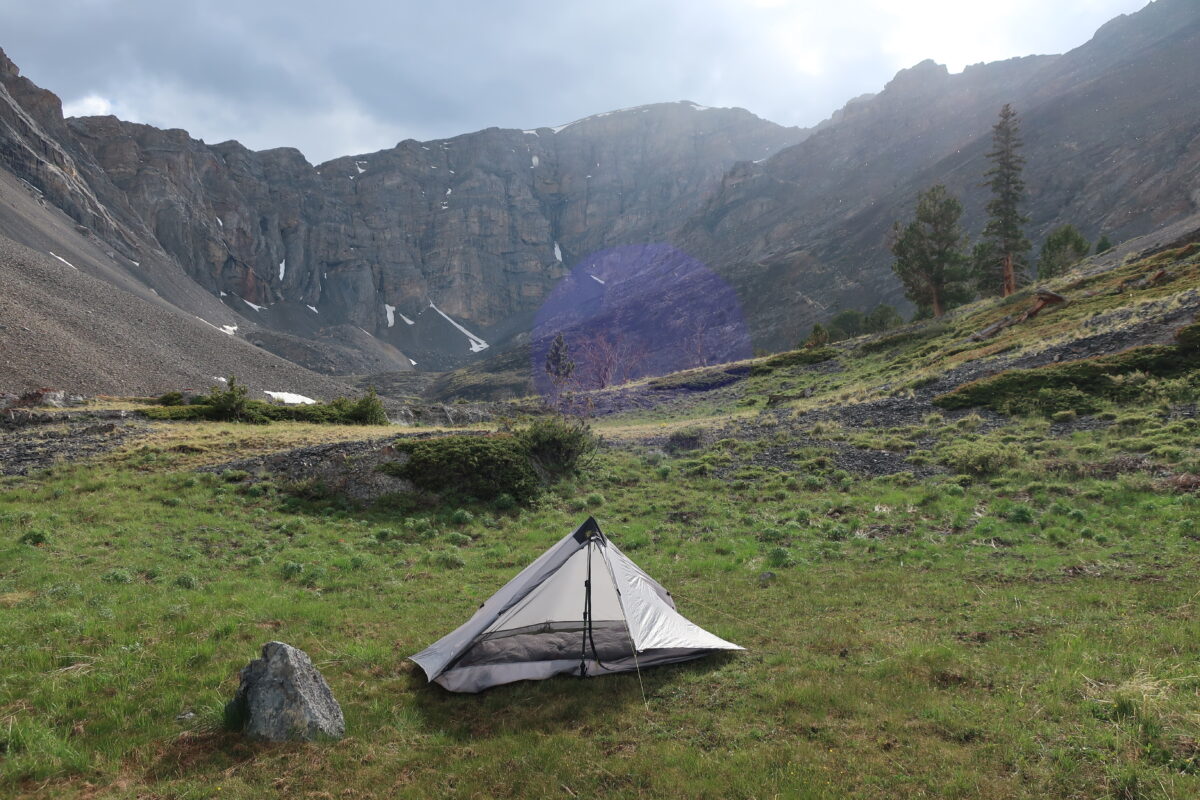


Home › Forums › Pushing the SOS button on the Garmin inReach Mini in Jasper National Park